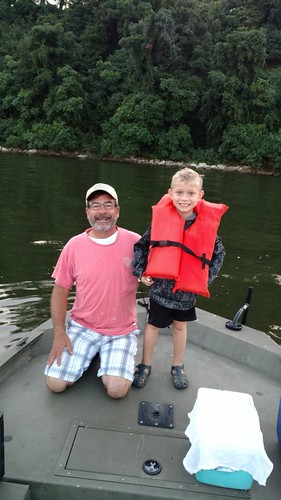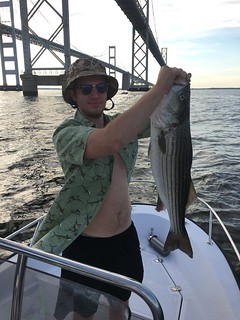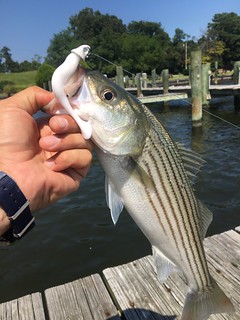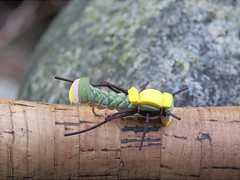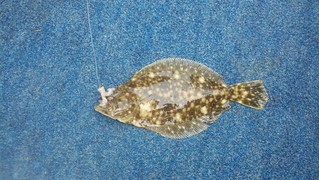Maryland Fishing Report: September 5
Labor Day weekend is a fleeting memory now and although we are under an intense heat wave cooler weather is anticipated as we move through September.
There is still plenty daylight at the end of the day to spend some time in the outdoors with family and friends.
Children love adventure and when Vincent Casagrande of Frederick went crabbing for the first time with his grandfather in the South River, it was a time he’ll never forget. They managed to catch a bushel using collapsible crab traps. Vincent even got to drive the boat under grandad’s supervision.
You can read their story and others in the Angler’s Log.
Forecast Summary: Sept. 5-11
While we are now in September with “Rocktober” just around the corner, the fishing pattern this week is stuck in mid-July. Bay anglers will need plenty of sunscreen and water over the next few days as a result of very hot, sunny, calm weather conditions. After Thursday, a new weather system will roll through with slightly cooler temperatures and more chance for rain.
For now, the pattern of fishing is to continue to seek the best combination of clear, cool, oxygenated waters. This means fishing deeper during the day or early in the morning during moving water in the shallows when surface water temperatures can be about 3 degrees cooler. Very warm water dominates with the coolest water at the top of Chesapeake Bay and increasing down to the Maryland-Virginia line. At the National Oceanic and Atmospheric Administration buoys daytime water temperatures are warm with Annapolis at 87, Gooses at 88 and Point Lookout at 89 degrees. Expect surface water temperatures to stay very warm all week.
Monitoring data show adequate oxygen from surface down to about 16-20 feet at Swan Point down to the Bay Bridge, 23 feet at Bloody Point, and from the mouth of the Choptank down to the state line, over 30 feet.
Upper bay water clarity is still reduced from the elevated river flows from the Susquehanna down to Swan Point. In addition, algal blooms are beginning to appear along the western shore from Chesapeake Beach to the mouth of the Potomac.
There will be above average tidal currents all week as a result of the new moon Sept. 10.
For the latest fishing conditions, please be sure to check out Click Before You Cast.
The Conowingo Dam is currently releasing water for power generation during the day with waters down river showing signs of clearing. The Gunpowder and Bush will see stained conditions from recent heavy rains adding to conditions in the upper bay. Chumming and live lining spot continue to be the most popular ways to fish for striped bass this week along channel edges. Swan, Love and Podickory points are good places to check at about 20 feet. Chumming is always a mainstay but live lining spot will often put you on larger fish. Smaller striped bass tend to swarm chum slicks and channel catfish will move into areas where the chum drifts to the bottom.
Spot can be found on hard bottom in the mouth of the Chester and Magothy rivers in about 15 feet of water. The west side of the Bay Bridge has also been a good place to find spot in about 10 to 15 feet of water. Pieces of bloodworm on a simple bottom rig with a No. 4 hook will do the trick and something as simple as a plastic garbage can will serve as a live well in a pinch. White perch can also be a welcomed part of the bottom fishing mix.
The Bay Bridge piers and rock piles, as well as the sewer pipe are holding striped bass this week in about 20 feet of water. Boats have been anchoring up current of the bridge piers near the 25-foot depth curve and drifting live spot back to the bridge piers. Jigging and live lining spot near the rock piles has also been popular.
Thomas Point has been a very popular place to fish, whether drifting live spot, jigging or casting swimbaits and topwater lures in the early morning hours. The outside edge of Hacketts Bar has been also getting some attention from live liners. The channel edge at Tilghman Point in Eastern Bay is a good place to check for suspended striped bass as is Kent Narrows. The channel edges of the False Channel and generally speaking any channel edge has the potential to hold suspended striped bass. Spot can be found on hard bottom at places like Whitehall Bay, Eastern Bay and the lower sections of the tidal rivers in about 15 feet of water. White perch can be found in many of these same areas.
The shallow water striped bass fishery continues to be a very early morning affair. Surface water temperatures are holding in the mid-80s so fish often head for deeper water as soon as the sun cracks the horizon. Shoreline structure areas in the lower regions of the tidal rivers and places like the rocks at Poplar Island are good areas to fish.
The catch-and-release fishery for red drum continues this week in the general area from the Southwest Middle Grounds to the Northwest Middle Grounds, which includes the area around the Target Ship. At times the large red drum can be seen on the surface chasing small bluefish, sea trout and anything else that looks like lunch. There are bay anchovies in the area, which the bluefish and other smaller fish are working on and they in turn draw the attention of the large red drum. Casting large spoons or soft plastic jigs is a great way to catch red drum but stout tackle is required to ease the stress on these beautiful and valuable fish. It does not take much to drive them down to the depths and curtail the action so motoring through them is a sure way to end the fishing action. The utmost care should also be given to quickly return the fish to the water; don’t exhaust them.
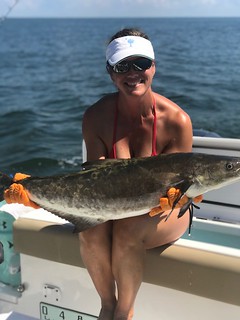
Ann Rickwood was fishing with her husband and family when she caught this nice cobia near the Southwest Middle Grounds. Photo by Darren Rickwood
Trolling is another option with large spoons, bucktails or diving crankbaits when action is not so obvious. One should never troll through breaking fish when your neighbor is casting. It is a sure way to get a stink eye and a bad reputation out on the water. A few cobia are being caught now and then by those casting or trolling, which will spark up anyone’s day, and perhaps inspire some to try chumming and live lining eels.
Most who are fishing for striped bass are doing so by live lining spot along prominent channel edges in the lower Potomac near St. George Island and Piney Point. The fish tend to be suspended at about 20 feet. There is also some chumming action going on at the mouth of the Potomac and the rock piles north of Point Lookout for striped bass and bluefish. Most of the striped bass attracted to chum slicks tend to be undersized.
There continues to be a worthwhile early morning striped bass fishery along shoreline structure areas in the early morning. The lower Patuxent, St. Mary’s and the lower Potomac rivers have been fun places to cast topwater and swimbait lures with light tackle.
Trolling a mixed spread of red and green hoses, small and large spoons, and bucktails has been popular for a mix of Spanish mackerel, bluefish, striped bass and red drum along the shipping channel edges, as well as Tangier and Pocomoke sounds.
Bottom fishing for a mix of spot, croaker, small bluefish and white perch has been very good in the lower Potomac, lower Patuxent and the eastern side of the bay in Tangier and Pocomoke sounds. Peeler crab and clam snouts work well for croaker, bluefish and white perch; bloodworms for the spot.
Recreational crabbing has greatly improved in all three regions of the bay. In the upper bay one can expect to catch a half bushel to nearly a full bushel per outing. In the middle and lower bay a full bushel of nice crabs is not uncommon. The crabs being caught are typical late summer crabs that are full and heavy. Fresh chicken “necks will work well but razor clams continue to catch the most crabs.
The Labor Day weekend has passed us by and boat traffic will start to thin out on Deep Creek Lake giving anglers a little more peace and quiet. Water temperatures are about as high as they will be and cooler nights will start to lower lake temperatures. The shallow areas of coves with grass and shoreline structure are good places to target largemouth bass in the morning and evening with topwater lures. Grass edges can be worked with spinnerbaits or swimbaits. Floating docks and overhead structure such as fallen treetops are great places to find largemouth bass loafing in the shade. Soft plastics are a good choice for working these areas. Smallmouth bass can often be found on rocky points and near deep grass.
The trout management waters of the western region offer wonderful fishing this time of the year and Alan Klotz offers us some fun tips:
The weather is still rather warm and terrestrial insects are at their peak. This is the time to use foam grasshopper or cricket patterns. Fishing with these large “flies” can produce some rather explosive strikes from trout! One of the best areas to fish is the Catch-and-Return Trout Fishing Area of the North Branch Potomac River just downstream of Jennings Randolph Lake Dam. The property adjoining the river near the upper boundary are large fields loaded with grasshoppers and crickets. Just cast out toward the middle of the river and “swim” the fly in short twitches, just like a real grasshopper trying to get back to shore. The strikes are aggressive and about as much fun as one can have while fly-fishing. Other good terrestrial patterns include beetle and green inchworm imitations during the early fall.”
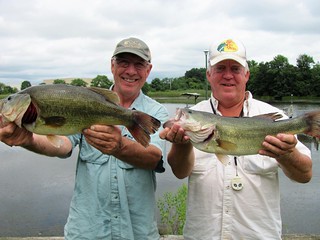
Tim Campbell and Scott Sewell are a pair of fun-loving fishing buddies. They spent a fun morning in the Middle River and hold up two whooper largemouth bass before slipping them back. Photo courtesy of Tim Campbell
Largemouth bass are still holding to a summer pattern of behavior and in fact the extreme heat has them leaving the shallows earlier and staying in cool shade longer into the evening. As the amount of daylight begins to shorten, grass beds in tidal waters are diminishing in some areas. Targeting existing grass before dawn with topwater lures, tubes or small lipless crankbaits is a good tactic. The places where the largemouth are retreating to during the day are often under thick grass, sunken wood or similar structure. Dropping stick worms down through the thick overhead grass works well and grubs and soft plastic jigs, tubes or drop shot soft plastics can be worked around deeper structure.
Crappie can be found near deep structure; bridge piers, marina docks or sunken brush piles are good places to look for them. Small jigs, jig minnow combinations or drifting minnows near these places can often provide good crappie fishing. Bluegills and similar sunfish can be found in a wide variety of ponds and reservoirs. Fishing with small lures, worms or crickets is a fun way to fish for them, especially for children. Using a lightweight fly rod with small rubber-legged poppers is another fun way to fish for them.
Surf fishing for kingfish is very good with the best catches occurring in the morning before the heat sets in. Bloodworms has been the best bait. Spot and croaker can also be part of the catch. Strip baits or finger mullet is a good choice to catch small bluefish and the occasional flounder. Small black drum can be caught on clams or sand fleas.
At the Ocean City Inlet and Route 50 Bridge flounder are being caught on strip baits, minnows and small live mullet or fresh peanut menhaden. Sheepshead can be caught at the South Jetty on sand fleas. At night bluefish can be caught as they move in and out of the inlet by casting spoons and small diving plugs.
In the back bay channels flounder fishing has been excellent. Clear warm water and accommodating flounder has for some of the best fishing of the season. Boat traffic is down so fishing in the channels is a little safer and a little more peaceful.
Outside of the inlet there is some trolling action on the nearshore lumps inside of the 30 fathom line for a mix of Atlantic bonito, Spanish mackerel, bluefish and small dolphin. The wreck and reef sites have been producing excellent flounder fishing along with a mix of triggerfish and spadefish.
The Poormans and Baltimore canyons have been the hot spot lately for white marlin with several boats reporting double digit releases. Blue marlin are also part of the mix along with dolphin and occasional Bluefin or bigeye tuna. Deep drop fishing for tilefish has also been very good.
“Fishing keeps men as boys longer than any other pursuit.” – Zane Grey
Keith Lockwood has been writing the Fishing Report since 2003 and has had a long career as a fisheries research biologist since 1973. Over the course of his career he has studied estuarine fishery populations, ocean species, and over a decade long study of bioaccumulation of chemicals in aquatic species in New Jersey. Upon moving to Oxford on the eastern shore of Maryland; research endeavors focused on a variety of catch-and-release studies as well as other fisheries related research at the Cooperative Oxford Laboratory. Education and outreach to the fishing public has always been an important component to the mission of these studies. Keith is an avid outdoorsman enjoying hunting, fishing, bird dogs, family and life on the eastern shore of Maryland.

